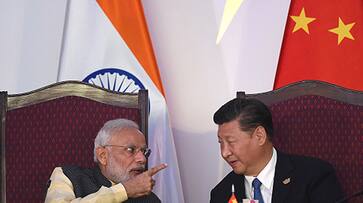Asian Century: How India can handle a dominant China
- India has to take the 'China challenge' in Asia as a strategic opportunity.
- This will call for often challenging and bold choices, with the attended risks.
- Increasing the Defense Budget is the first thing India needs to do.

Chinese hegemony in Asia is a reality. However, India need not fret over it too much, for China’s long-term success is far from guaranteed. India has to take the 'China challenge' in Asia as a strategic opportunity.
This will call for often challenging and bold choices, with the attended risks - including upsetting China. But if India follows a strategic long-term approach, interwoven with calibrated short-term policy measures and flanked by bilateral and multilateral partnerships - China could find it harder to execute its unstated policy of marginalising India.
Walk the talk – Increase the Defense Budget.

This is the first thing India needs to do. The Indian spending on defence is entirely out of tune with the geopolitical challenges and responsibilities as a rising power. At $39 billion in 2016, India spent only 1.8% of its GDP on defence. China spent an estimated $123 billion in the same year just about 2.5% percent, of its much larger GDP.
A lot of the Indian defence spending historical by pay, pensions and maintenance of her large standing Army. Last year that left only $10 billion for capital spending on purchasing new weapons. When you consider that each Rafale fighter jet costs $230 million (lifetime costs) - it gives you an idea of how little an Import dependent country like India can buy.
Without bringing the defence budget to 3 percent of the GDP over the next five years and trimming the manpower-heavy army in numbers - India will not be able to exert the kind of military heft it needs to counter China in Asia. Above else, military power projection costs big money.
Employ military power as an option in foreign policy

For far too long military force has not been a viable option in India’s foreign policy. Indeed, India’s foreign office has little interaction with or input from her armed forces.
In Pakistan, the Army is the institution of foreign policy making. Armed intervention, such as the covert use of proxies against India is a dynamic and established element of her foreign policy strategy. In China too, military force is applied consistently by the communist party in pursuance of foreign policy objectives deriving from its revolutionary roots.
India must develop institutional capability and invest political capital in establishing the use of military force as a viable part of her foreign policy, to seriously convert its military capability into strategic intent that addresses her security priorities. This calls for a reorientation of her strategic culture that has so far stressed on non-military diplomacy as the primary - and often the only means in foreign affairs.
Develop Joint operational capabilities within and outside

Increasingly, India faces the spectre of a two-front war with China and Pakistan at the same time. The two countries are developing joint operations. India needs to develop the same within its air force navy and army. The proposed creation of a tri-service chief with the rank of a four-star general is a move in the right direction.
Joint operations are not easy – they require a much more intense working together of military assets, an establishment of a flexible command structure and operational apparatus that stresses amalgamation across service arms. India must take this forward in earnest as the most immediate military priority.
Onn the outside, India’s recently signed Logistics Exchange Memorandum of Agreement (LEMOA) formalises the already busy interaction between the US and Indian navies. This builds trust and capacity on the high seas. Both countries can use each other’s facilities for logistics and refuelling of ships.
Interestingly there is no time limit on the time vessels can take in the harbour and if need be Indian ships can be in with the fifth fleet in Bahrain for a period, and the US Navy can berth in Vizag and so forth.
For India, the outreach needs to be with all the regional maritime democracies. All of them share a common concern of a belligerent PLA Navy. It is important to forge alliances with the navies of Japan, Australia and Singapore.
India must not worry about the Chinese reaction in case Vietnam accepts Brahmos missiles or when Japan and India exercise jointly in South China sea. Few know that Singapore offered India a Naval base in the 1950’s which Nehru refused – it is time to address historical shortcomings if India wants to protect its and its allies interests in Asia.
Continue confidence building with China

In pursuit of power and in forging ways of its application India must not lose sight of the fact that for all the tension and occasional stand off the India-China border has been peaceful since the 1967 Nathu la incident. It is important to keep talking to China.
India should consider confidence building measures and increase contacts between the people and armed forces of the two countries. China is a pragmatic power. If India builds its military strength and demonstrates a willingness to stand up for its national interest, there is no reason why it cannot simultaneously engage the People's Republic in areas of mutual interest.
In the absence of mutual trust, the two civilizational powers risk losing the Asian century. And both powers may come to regret it.
(The author is a Delhi-based security analyst for defence, foreign policy stories.He was also a visiting fellow at the Institute of Chinese studies, Delhi)
















